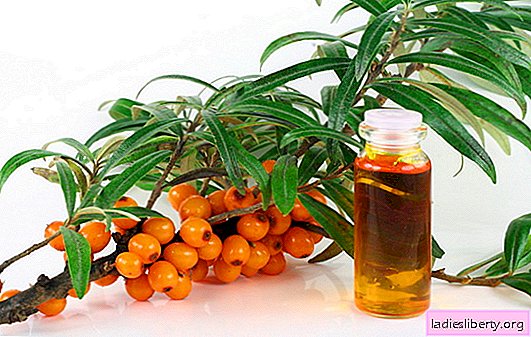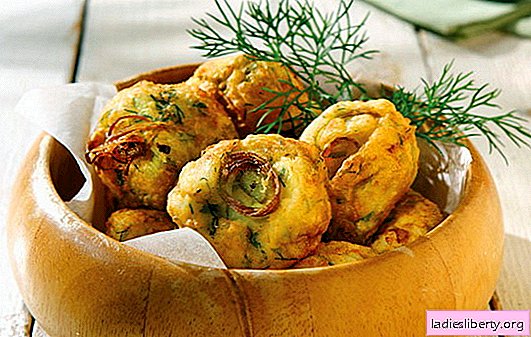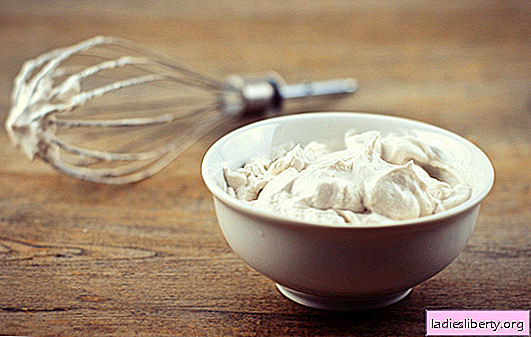
Asparagus haricot (tursha) - a high-yielding annual, not widely used in summer cottages.
But in vain.
This culture is easy to grow and unpretentious in care.
Why is it worth growing asparagus beans on a personal plot?
Tursha is a profitable crop for cultivation. Described below 7 main "advantages" its cultivation on a personal plot:
1. The fiber-free structure and delicate taste of young pods (they are also called shoulder blades) and their high nutritional value (beans are superior to fish in terms of protein content, it contains about 30 amino acids, tea from bean leaves has healing properties);
2. High productivity (with proper agricultural technology from one plant during the growing season, you can collect 3-5 kg of blades);
3. A long period of fruiting;
4. Easy care;
5. Decorative qualities - due to the ability to quickly grow green mass, against which yellow, purple, red or white flowers are “scattered” with bright spots, beans can be used for landscaping;
6. Increases soil fertility - asparagus beans, like other representatives of the legume family, fixes and accumulates nitrogen in the soil due to nodule bacteria;
7. As protection against wind and moles, the lush greens of asparagus beans create an openwork shadow and protect such delicate crops as cucumbers and tomatoes from wind gusts. To this end, it is planted on the south side of the garden or around the greenhouse. Moles and shrews do not like the smell of beans and bypass the areas along which this crop is planted.
Asparagus beans: planting, variety selection
Selection and preparation of a seat
For growing asparagus beans choose a sunny place with protection from the cold north winds. Optimal would be a slight slope of the terrain to the south-west or south. Soil this culture prefers fertile loose. Heavy soils or low-lying moist areas for the cultivation of beans are not suitable.
The site begins to prepare in the fall. When digging, organic (5-7 kg / m2 humus) and mineral fertilizers are applied: potassium chloride (20g / m2), superphosphate (30g / m2). She does not need nitrogen fertilizing - she accumulates them in the soil herself as a result of a symbiotic interaction with nodule bacteria. An excess of nitrogen will lead to an intensive growth of green mass to the detriment of fruiting - the number of ovaries formed is reduced, small pods are formed.
The best predecessors for asparagus beans are nightshade (tomatoes, potatoes, eggplant), all kinds of cabbage, root vegetables (beets, carrots, root parsley, celery), cucumbers.
Cultivation methods
Depending on the type of asparagus bean, there are different ways of growing this crop. Shrub varieties are planted in lowercase rows or staggered. The row spacing is left between 0.4-0.45 m, and between the plants - 0.2-0.25 m.
For curly beans, you need to prepare a support.
They grow it in the following ways:
• Nest - on a round bed with a diameter of 0.8-0.9 m plant 9-12 beans and construct a structure of stakes according to the type of hut;

Hut stakes support
• On a trellis with taut ropes - this is the best option for creeper beans. Each plant is provided with the maximum amount of light, the area of nutrition, is well ventilated (i.e., the risk of rot development is reduced). In addition, with this method of cultivation, harvesting is greatly facilitated - the pods are in sight;

Rope trellis for curly asparagus beans
• Along the walls of buildings, fences - clinging to these supports, beans in the process of growth form spectacular "green carpets", giving the site an additional decorative effect.
Dates and technology of sowing in soil
In open ground, asparagus beans are sown depending on the climatic conditions of the regions: in the middle lane it is the second half of May, when the threat of frost has passed, in the northern regions - early June, in the south - the second half of April. The soil by this time is warming up at a depth of 10 cm to + 8-10 ° C.
Sowing operations include the following steps:
• Bean sorting - whole, undamaged seeds are selected for planting;
• Selected grains are left to swell in warm water for 10-12 hours;
• Swollen seeds are planted on a prepared place to a depth of 4-5 cm on light soils and 2-3 cm on loam;
• After sowing, the surface of the bed is mulched with humus. If there is a threat of freezing, then shelter will be needed with a film;
• Seedlings appear 7-10 days after sowing. If they are dense, they are thinned out, keeping 10-25 cm between the plants in a row. During this period, row-spacing is carried out. Aeration of the soil enhances the activity of nitrogen-fixing nodule bacteria and, as a result, the better development of the plant;
• When the bushes reach 10 cm in height, they are lightly spud.
In the northern regions, to reduce the time for harvesting, it is recommended to grow seedlings at home or in a greenhouse. It is better to plant the beans immediately in disposable peat cups so that when planting on the garden beds they will not destroy the earthen lump - the beans do not tolerate damage to the root system.
Grade selection
For growing asparagus beans in regions with a temperate climate, it is better to use varieties of early ripe and mid-ripening, a crop from which can not only be eaten immediately, but also harvested for the winter (freezing and preservation).
The most popular varieties among gardeners are presented in the table:
Ripening time | Plant shape | Grade name |
Early ripe (45-60 days) | Bush | Crane, Serengeti, The Oil King, Octave, Triumph 764, Saxa-615, Indiana, Caramel, Gina, Rebus, Paloma, Pagoda |
Curly | Blue Hilde, Gold Mary, Korean, Rumba | |
Mid-season (55-80 days | Bush | Panther, Note, Korlevsky purple pod, Polka, Dewdrop, Fantasy, Riddle, Flamingo, Pensil Pod |
Curly | Snow Queen, Harmony, Vigna Countess, Macaretti, Purple Queen, Golden Nectar, Winner |
Asparagus beans: leaving (photo)
After the beans of the asparagus have sprouted, care for it consists in watering, loosening and weeding the weeds, applying fertilizers and controlling pests. Beans are quite unpretentious and drought-resistant, however, with a lack of moisture, the ground part develops poorly, the pods become smaller and deformed. It is better to water early in the morning or in the evening under a bush. After watering, it is imperative to carry out loosening of the earth around the bushes so that the soil crust does not form. To preserve moisture on the beds and reduce the number of weeds, the aisle can be mulched.

A bed with asparagus beans is mulched with straw
In climbing varieties, to increase the number of ovaries, pinch the tops at a level of 2-2.5 meters.
Asparagus beans: top dressing
During the growing season, asparagus beans are fed several times. Due to the fact that this culture itself accumulates nitrogen in the soil, an excess of this substance harms it. Therefore, organic matter (5-7 kg / m2 of rotted manure or compost) is introduced in the autumn for digging. If the soil in the area is infertile sandy, then nitrogen fertilizers are applied in the spring (for example, ammonium nitrate 20-30 g / m2).
During the budding period, phosphorus-potassium complexes are added: potassium chloride (20g / m2), superphosphate (30g / m2). For the formation of pods, plants need an increased amount of magnesium, phosphorus and potassium. These elements are found in large quantities in wood ash: it is scattered with a thin layer around the bushes. At the same time, it will protect bean bushes from attacks by slugs and snails. After the first wave of flowering, the beans are fed again.
Asparagus Beans: Harvesting
The timing of pod ripening depends on the variety selected: early ripe harvested 45-60 days after sowing, mid-ripening - 55-80 days, late-ripening - 90-130 days. To stimulate the formation of new ovaries and increase the yield, it is necessary to collect the shoulder blades (pods) more often - 7-8 days after flowering. By this time, the fruits reach milk ripeness (without coarse fibers) and taste like young asparagus. Removing the blades stimulates the second wave of flowering. Thus, you can harvest until late autumn. Fresh asparagus beans are not stored for long, it is better to use it immediately directly in food, preserve or freeze.
Asparagus beans: diseases and pests (photo)
The most common disease of asparagus bean (and all legumes) is anthracnose, which affects the plant in all phases of its development. The leaves turn brown and fall, their petioles and stems are covered with dark stripes, rusty depressed spots with pinkish growths appear on the pods.

Manifestation of anthracnose on bean pods
The disease is spread by the wind in wet weather. To combat anthracnose, it is necessary to observe crop rotation (to plant beans in one area only after 4-5 years), in the autumn to destroy plant debris and dig the soil, cultivate early ripe varieties.
White rot - Another disease of fungal etiology. It is characterized by softening of the pods and the formation of white plaque on them. From mid-July, the stems of the plant are also affected.

White-rotten bean pods
Humidity contributes to the progression of rot. To prevent this disease, infected plants are removed from the garden, do not allow thickened plantings, increase doses of potassium-phosphorus fertilizers, and the pods are harvested in dry weather.
Of viral ailments, beans are susceptible yellow mosaicthe carrier of which is aphids. Leaves acquire a chlorotic appearance - on the main green background, yellow areas of different color intensities appear. Pod deformation is possible. Can not be treated. As a preventive measure, aphid control (spraying with insecticides) and weed control are indicated.
Of bacterial diseases, beans are often infected bacteriosis (angular spotting). All the aboveground parts of the plant are affected: oily spots of wound shape and size are formed on them. As a result, the plants dry quickly.
The following pests parasitize on beans:
• pea gall midge - damages seeds, flowers, beans;
• weevil nodule - adult insects eat around the edges of the leaves, the larvae feed on nitrogen-containing nodules;
• bean kernels - adults feed on pollen and flowers, larvae damage pods and beans;
• aphid is a carrier of viral yellow mosaic.
Insecticides are used to control these pests.
As protection against slugs and snailseating young plants (especially bush varieties), the earth around the plants is sprinkled with lime, wood ash, needles, set traps or use the granular preparation Thunder.











